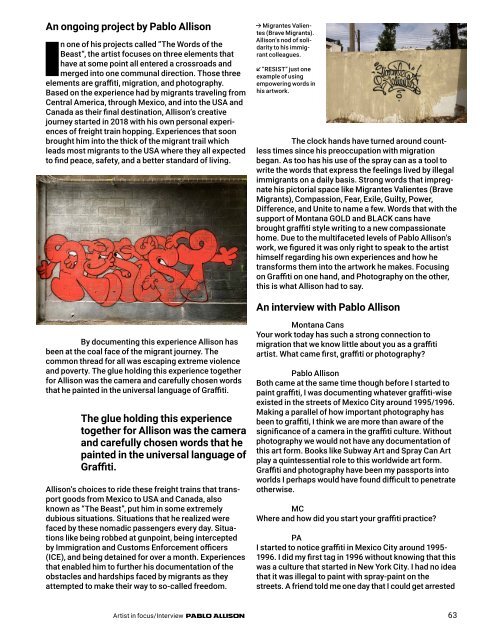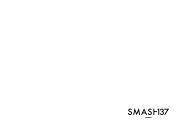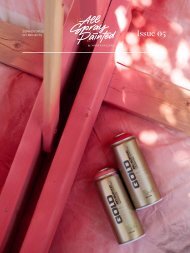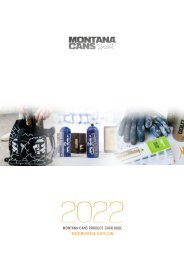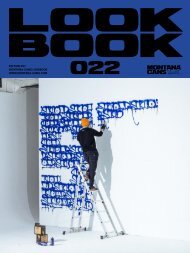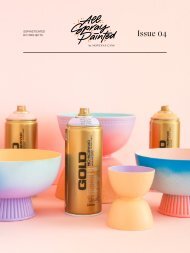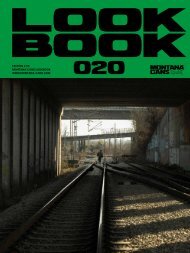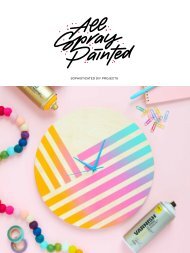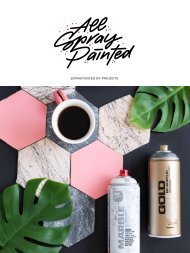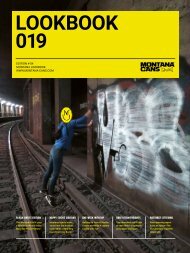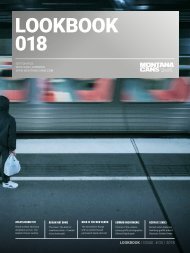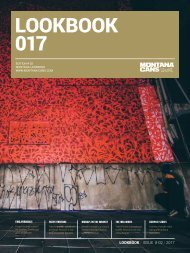Montana LOOKBOOK #08 / 2023
MontanaCans LOOKBOOK 2023 Issue #8 It's that time again to welcome the release of the Montana Cans Lookbook 2023 edition #8. There is no rewind button on life, making it all the more important to reflect on the year that was, and the things that happened during that period. The Montana-Cans Lookbook does just that and reflects on some of the highlights from the year prior. A moment to reflect on those things that may not have received as much shine as they deserved while being "in the moment". www.montana-cans.blog
MontanaCans LOOKBOOK 2023 Issue #8
It's that time again to welcome the release of the Montana Cans Lookbook 2023 edition #8. There is no rewind button on life, making it all the more important to reflect on the year that was, and the things that happened during that period. The Montana-Cans Lookbook does just that and reflects on some of the highlights from the year prior. A moment to reflect on those things that may not have received as much shine as they deserved while being "in the moment".
www.montana-cans.blog
Create successful ePaper yourself
Turn your PDF publications into a flip-book with our unique Google optimized e-Paper software.
An ongoing project by Pablo Allison<br />
In one of his projects called “The Words of the<br />
Beast“, the artist focuses on three elements that<br />
have at some point all entered a crossroads and<br />
merged into one communal direction. Those three<br />
elements are graffiti, migration, and photography.<br />
Based on the experience had by migrants traveling from<br />
Central America, through Mexico, and into the USA and<br />
Canada as their final destination, Allison’s creative<br />
journey started in 2018 with his own personal experiences<br />
of freight train hopping. Experiences that soon<br />
brought him into the thick of the migrant trail which<br />
leads most migrants to the USA where they all expected<br />
to find peace, safety, and a better standard of living.<br />
→ Migrantes Valientes<br />
(Brave Migrants).<br />
Allison's nod of solidarity<br />
to his immigrant<br />
colleagues.<br />
↙ “RESIST” just one<br />
example of using<br />
empowering words in<br />
his artwork.<br />
The clock hands have turned around countless<br />
times since his preoccupation with migration<br />
began. As too has his use of the spray can as a tool to<br />
write the words that express the feelings lived by illegal<br />
immigrants on a daily basis. Strong words that impregnate<br />
his pictorial space like Migrantes Valientes (Brave<br />
Migrants), Compassion, Fear, Exile, Guilty, Power,<br />
Difference, and Unite to name a few. Words that with the<br />
support of <strong>Montana</strong> GOLD and BLACK cans have<br />
brought graffiti style writing to a new compassionate<br />
home. Due to the multifaceted levels of Pablo Allison’s<br />
work, we figured it was only right to speak to the artist<br />
himself regarding his own experiences and how he<br />
transforms them into the artwork he makes. Focusing<br />
on Graffiti on one hand, and Photography on the other,<br />
this is what Allison had to say.<br />
An interview with Pablo Allison<br />
By documenting this experience Allison has<br />
been at the coal face of the migrant journey. The<br />
common thread for all was escaping extreme violence<br />
and poverty. The glue holding this experience together<br />
for Allison was the camera and carefully chosen words<br />
that he painted in the universal language of Graffiti.<br />
The glue holding this experience<br />
together for Allison was the camera<br />
and carefully chosen words that he<br />
painted in the universal language of<br />
Graffiti.<br />
Allison’s choices to ride these freight trains that transport<br />
goods from Mexico to USA and Canada, also<br />
known as “The Beast”, put him in some extremely<br />
dubious situations. Situations that he realized were<br />
faced by these nomadic passengers every day. Situations<br />
like being robbed at gunpoint, being intercepted<br />
by Immigration and Customs Enforcement officers<br />
(ICE), and being detained for over a month. Experiences<br />
that enabled him to further his documentation of the<br />
obstacles and hardships faced by migrants as they<br />
attempted to make their way to so-called freedom.<br />
<strong>Montana</strong> Cans<br />
Your work today has such a strong connection to<br />
migration that we know little about you as a graffiti<br />
artist. What came first, graffiti or photography?<br />
Pablo Allison<br />
Both came at the same time though before I started to<br />
paint graffiti, I was documenting whatever graffiti-wise<br />
existed in the streets of Mexico City around 1995/1996.<br />
Making a parallel of how important photography has<br />
been to graffiti, I think we are more than aware of the<br />
significance of a camera in the graffiti culture. Without<br />
photography we would not have any documentation of<br />
this art form. Books like Subway Art and Spray Can Art<br />
play a quintessential role to this worldwide art form.<br />
Graffiti and photography have been my passports into<br />
worlds I perhaps would have found difficult to penetrate<br />
otherwise.<br />
MC<br />
Where and how did you start your graffiti practice?<br />
PA<br />
I started to notice graffiti in Mexico City around 1995-<br />
1996. I did my first tag in 1996 without knowing that this<br />
was a culture that started in New York City. I had no idea<br />
that it was illegal to paint with spray-paint on the<br />
streets. A friend told me one day that I could get arrested<br />
Artist in focus/Interview Pablo Allison<br />
63


